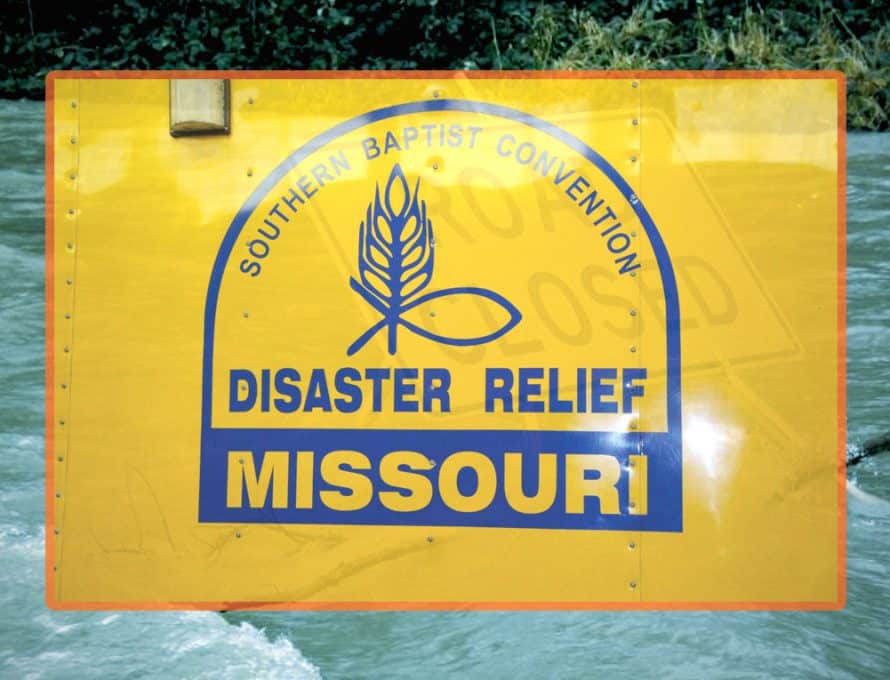It was somewhere between 2 and 5 a.m., April 30. It was cold, wet, and windy as I watched the waters of the Osage River creep ever closer.
When the Cole County Sheriff activated his posse (a ready-to-go group of trained civilian volunteers… no, we don’t chase after cattle rustlers, but my fingers are crossed) for flood duty, I changed into my uniform and immediately confirmed my availability. I thought I might spend the afternoon rescuing stranded citizens trapped in their flooded homes. Instead, I was stuck with another volunteer and a drowsy deputy working the 2 to 5 a.m. shift. We ensured that no one dared enter Engineers Road in Osage City, which was at least five feet under water.
Aside from several dozen worms, no one even came close to our road block. So we amused ourselves and stayed alert telling stories. I had a bit of a cold, so I let the other two do most of the talking. Naturally, the conversation turned toward the flood and disasters in general. The other posse volunteer, an older gentleman, began telling stories of his time working with the Red Cross during Hurricane Katrina.
He began talking about the rows of ambulance-like vehicles they’d fill with food to deliver to folks. I was ready to jump in at this point with “You know who cooks that food, don’t you?” but I was too slow.
“So where do you get the food?” the deputy asked, beating me to the punch.
Again, I was ready to jump in but was cut off.
“It’s the Baptists,” he said. “Oh man, let me tell you. You ain’t seen nothing like those Baptists. They come roaring in with all kinds of trucks and trailers. They set up up these huge kitchens, start cooking and they don’t stop until we tell them we don’t need any more. See, we have these big containers – I forget what we call them… sort of like a large ice chest…”
“Cambros,” I said.
He looked at me in surprise. “Yeah, cambros! And they just keep filling them up with thousands of hot meals until no one within 100 miles is hungry.”
“They must have some big Baptist parishes down there to have that kind of operation,” the deputy said.
Again, I tried to jump in and clarify.
“That’s the cool part!” my fellow posse member said. “They weren’t just local. There were trucks from Baptists all over the country. I even saw some from Missouri. You can tell where they’re from because they all wear these hats. Man, they’re really big on their hats. Some are white, some are pink and some are blue. Their whole operation is color coded and they work like nothing you’ve ever seen and it’s all for free. And clean, boy, they kept that outdoor kitchen spotless. They were the hardest working group I’ve ever seen.”
He was doing such a great job telling the Baptist Disaster Relief story that I didn’t bother correcting him on the hat colors.
“You don’t bother the workers in the one color of hat because they’re locked in on their job like a laser. You have to go find someone in a blue hat to talk to the leader.”
“Wow,” the deputy said, genuinely impressed.
“I’d been in Florida that summer for Hurricane Dennis with the Red Cross and they were there too. They’re everywhere.”
Here, I finally got to join the conversation in earnest. I explained that I get to work with these great people, and I happen to have one those, ahem, yellow hats sitting on the desk at home. Not only am I the Posse’s chaplain, I’m a Disaster Relief chaplain as well. What’s more, I explained that even as we spoke during that very graveyard shift, Missouri Baptist Disaster Relief volunteers were preparing to go to Neosho, southeast Missouri, and wherever else they were needed to bring help, hope and healing. I explained all the different things DR does in Missouri, the US and even overseas: not just feeding, but childcare, mud-out, chain saw, assessment, communication, showers, laundry, chaplaincy and more.
More importantly, I got to share why these people in color-coded hats did all that work after Katrina 11 years ago and why they are doing it this very minute. “Because Jesus loves us, and He wants us to love others,” I said. From there, I got to share the complete gospel with both of them.
Neither man accepted Jesus there on the shrinking banks of the Osage River, but that’s just fine. It would have been amazing if they had, to be sure, but almost just as amazing was the way the professionalism, sacrifice and testimony of Southern Baptist Disaster Relief workers – many of them from Missouri – acted as a seed that lay dormant in this man’s memory for over a decade. Their service became the living embodiment of Matthew 5:16: “In the same way, let your light shine before others, so that they may see your good works and give glory to your Father in heaven.” Their “good works” were indeed seen, and glory was given to God by those who didn’t even know Him! Who knows how many others seeds they’ve sown and who else has seen their good works? Who knows what seeds they’re sowing or who is watching this very minute?

